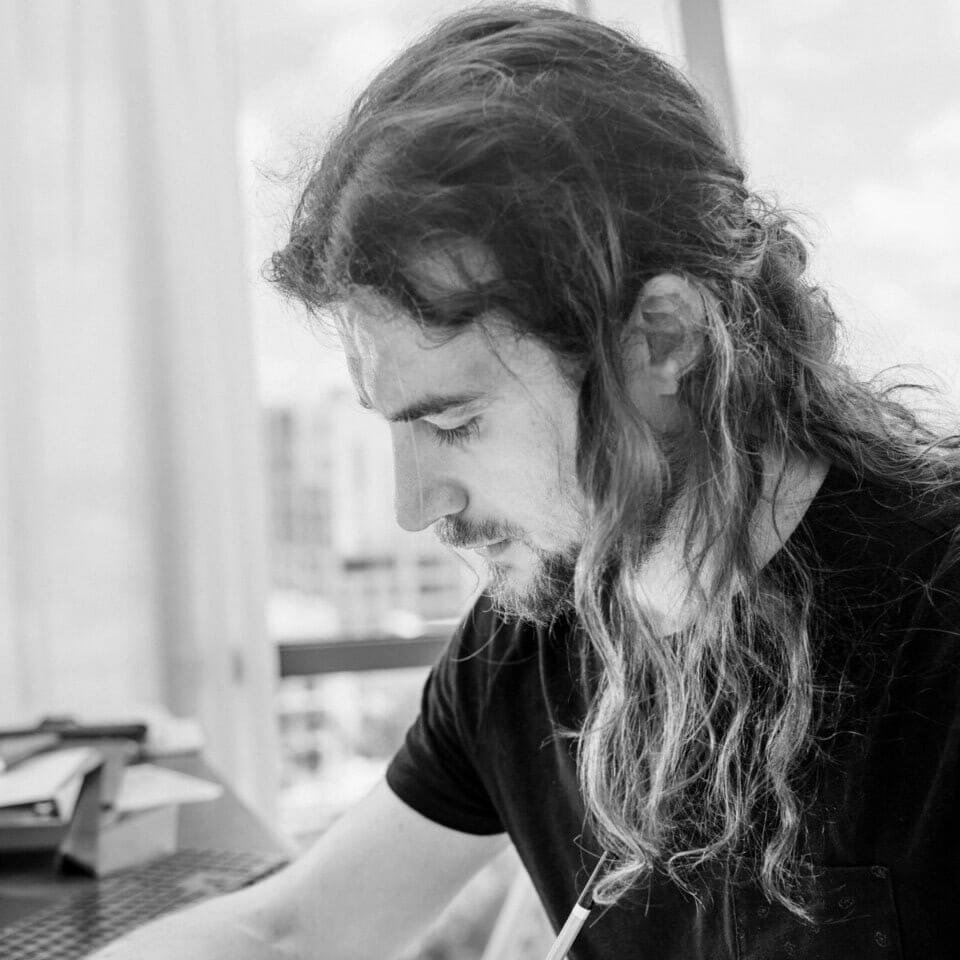Early Influences and Heritage
The artist, born in Italy, has always been in contact with the great artistic heritage of his homeland. A heritage that he considers it his duty to understand and study, even just to be able to speak about art.
And it is in this research and study that works like ‘The Daughter of Mona Lisa’, ‘David’, and ‘Romeo and Juliet: The Metamorphosis‘ are born.
This classical citation does not just arise from the idea of paying homage to Leonardo da Vinci, but also from experimenting with such a powerful symbol as the painting itself.
In fact, Alex is not the first artist to engage with the citation of the work. Marcel Duchamp, and other valuable artists before him, have used the Mona Lisa with the desire to explore its variations and connected concepts.”
The Mona Lisa’s Timeless Appeal
Leonardo’s Mona Lisa can indeed be considered the “supreme painting” of our time, a universal icon of Renaissance art and human genius. It transcends cultures and geographical boundaries; almost anyone in the world, when asked to name a painting, would likely mention the Mona Lisa. Its enigmatic gaze, balanced composition, and the mysteries surrounding its subject’s identity have captivated humanity.
Even today, 500 years after its creation, the painting continues to be celebrated as one of the greatest masterpieces of world art.
A New Perspective on Historical Art
Alex inserts himself into this continuous artistic discourse, adding his unique contribution that dialogues with the past and present, questioning and redefining the meaning and essence of art itself.
It becomes inevitable for a contemporary artist like Alex Righetto to engage with the “Mona Lisa,” paying homage without slipping into superficial repetitiveness that could verge on kitsch or déjà vu, often shunned in the artistic field.
Through an analysis of the concept and essence of Leonardo’s work, Righetto goes beyond mere replication to expand and reinterpret, creating a parallel worthy of discussion.
With “The Daughter of Mona Lisa,” he intertwines Renaissance roots with a contemporary aesthetic, inviting a new reading of an image steeped in history.
The artist’s words:
“I found myself working with an intriguing subject like the Mona Lisa almost by chance. I realized that Leonardo da Vinci’s painting is practically the archetype of every portrait, although there are many other portraits that are equally beautiful and significant.
I discovered that the subject (who might be Lisa del Giocondo) lost a daughter at birth.
This fact immediately added a human dimension to a painting that seems otherwise immortal.
I began to imagine the idea of representing transience, the contrast between life and death, between the finite and the infinite, simply by depicting the daughter’s face.
I believe the result encapsulates these important symbols.
I didn’t want to copy the original, but by using its essence and with similar rules of the game, I aimed to create a new painting that would be worthy of enduring over time.”
Alex Righetto




